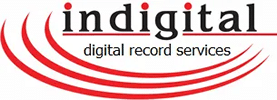Businesses handle numerous documents every day, such as contracts, lease agreements, utility bills, and tickets, Physical documents are not only costly to produce but also take up vast amounts of space in filing cabinets. One research reveals that US companies spend $8 billion every year managing paper. Also, 50–70% of office space is used to store and file printed documents.
Fortunately, you have a way out. Businesses can go paperless to reduce the need to store paper documents while saving huge amounts of money. Although going paperless may sound like a time-consuming, labor-intensive, and costly process, many technologies make the process more straightforward and stress-free.
Discover how going paperless with technologies such as document scanning can help your business reduce costs and save money.
1. Cut Storage Costs
You may argue that a piece of paper is thin and light and barely occupies space. However, pieces of paper stack up very fast and take up vast amounts of space. A stack turns into files, files into file cabinets, and cabinets into rooms, floors, and warehouses. Managing all this paperwork becomes expensive considering the storage and maintenance required. In fact, organizations spend an estimated 3% of revenue on paper, printing, filing, and storing files.
2. Less Money on Paper
On average, every employee spends $80 every year on paper. Going paperless reduces or even eliminates these expenses. You save money on paper as well as other stationaries like printer ink, postage, and printer maintenance. Less paper also means lower distribution costs.
3. Enhance Information Security
Paper documents are easy to lose, misplace, and damage. Gartner Group contends that a misplaced document costs $120 while reproducing a lost document costs $220. The costs add up quickly if multiple documents are misplaced or lost. Going paperless increases the security of documents and makes them less vulnerable. Additionally, filing errors and typing errors do not make documents impossible to find.
4. Tax Savings
The government acknowledges the numerous benefits organizations can harness from going paperless. As such, it offers tax credits and rebates for businesses that ditch paper and go digital. Your business can get enormous tax savings by merely going paperless. Using paperless initiatives can enhance your reputation, credibility, and revenue.
5. Lower Energy Bills
On average, office staff uses 10,000 sheets of copy paper every year. Most of these papers have to be printed, which increases energy bills. Going paperless reduces the amount of printing required. Lower energy bills often translate to substantial cost savings.
6. Improve Efficiency
Managing paperwork is labor-intensive and time-consuming. Employees spend countless hours and effort organizing, filing, and retrieving physical paperwork. Luckily, going paperless saves you time and effort and increases efficiency. Employees can access documents with a few clicks. They can focus more on their roles and less on paperwork.
7. Increase Revenue
Ultimately, going paperless increases your business’ revenue. Going paperless boosts your ROI while giving you a competitive edge over competitors.
Although going paperless has a few upfront costs, the long-term cost savings are worthwhile. Your company saves money on paper, energy bills, storage costs, and distribution while increasing efficiency and revenue. Go paperless today and save money. You also have the fact that it reduces deforestation, leaving trees to do the good work of cleaning the air.
With that in mind, contact Indigital for professional document scanning services, allowing you to go paperless. We employ the latest scanning technologies while adhering to high standards of file integrity and information privacy. We look forward to speaking with you, answering any questions you have, and fulfilling all your digital needs so that you can truly transition to paperless.

